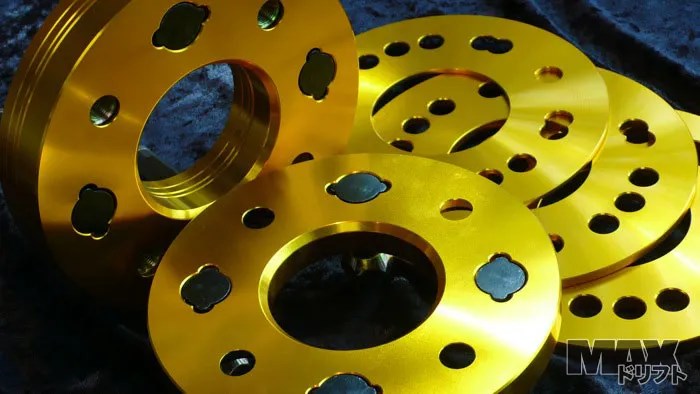Are you looking to modify your car's stance, improve handling, or stop your tyres from rubbing on your suspension? Wheel spacers might be the answer.
But, before you do, there are regulations to consider to ensure safety and legal compliance. Here's a breakdown of the key points:
What are Wheel Spacers?
These disc-shaped components fit between your car's wheel hub and the wheel itself. They push the wheel outwards, creating extra space between the inner wheel and the body.
Types of Wheel Spacers
- Slip-on Spacers: Simple rings that slip onto the hub, requiring longer bolts to accommodate the added thickness.
- Bolt-on Spacers: These spacers secure onto the existing wheel studs and provide new studs for the wheels. They're generally used for thicker spacers and offer a more secure fit.

Benefits of Wheel Spacers
- Enhanced Handling: A wider track width (distance between the wheels on each axle) can improve stability and cornering performance.
- Aesthetics: Wheel spacers can create a more aggressive stance and make your wheels fill out the wheel wells for a visually appealing look.
- Brake Clearance: Spacers can provide additional space for larger brake callipers and rotors.
- Custom Fitment: They allow you to use wheels with different offset or backspacing specifications.
Potential Drawbacks
- Stress on Suspension: Incorrectly installed or excessively thick spacers can put additional strain on your suspension components.
- Wheel Alignment Issues: Improper installation can lead to alignment problems, affecting tyre wear and handling.
- Vibration and Noise: Poor quality or improperly sized spacers can cause vibrations or noise.
Choosing the Right Spacer
This is super important. Before you go any further, find out what your vehicle's stud pattern is. A quick Google search will do that for you.
- Quality: Opt for high-quality spacers made from durable materials like aluminium or steel.
- Sizing: Ensure the correct thickness and hub-centric design to match your vehicle's specifications.
- Torque: Properly tighten the spacers and wheels to the manufacturer's specifications for safety.

Remember
- Track Width Limit: Wheel spacers should not increase the vehicle's track width beyond the manufacturer's specifications. Generally, the overall track width cannot be increased by more than 25mm on each side.
- Safe and Secure Fitment: Wheel spacers must be manufactured to safety standards and securely fastened to the hub and wheel for optimal stability. Poor-quality or incorrectly installed spacers can compromise handling and lead to safety risks.
Better to be Safe Than Sorry
Sometimes, you might find it's best to back away from your phone and that Marketplace listing. Buying the right wheels the first time can save you money and hassles.
Compliance with Modification Rules and Certification
Significant modifications, including the installation of wheel spacers, require certification to ensure they meet safety standards. This involves ensuring the spacers don't interfere with other components or compromise the vehicle's structural integrity.
Unless the wheel spacer is approved by the vehicle, wheel, or axle manufacturer for your car, it is HIGHLY UNLIKELY. It needs certification by the Low Volume Vehicle Technical Association (LVVTA). This is crucial to passing a Warrant of Fitness (WoF) inspection, which is mandatory for all vehicles on New Zealand roads.
Consulting a Professional:
Before installing wheel spacers, it's advisable to consult with a certifier. They can ensure compliance with New Zealand regulations and help you obtain the necessary certifications. This ensures your car remains safe and legal to operate on public roads.

For more detailed information, refer to the websites of the New Zealand Transport Agency (NZTA) and the LVVTA.
Shop Wheel Spacers








